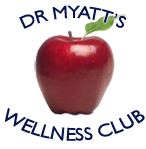1.) Cleanse. The purpose of this is to remove surface debris and aid in the exfoliation. Cleansing should be accomplished with a mild soap such as Dove or with a gentle cleanser. Avoid harsh alkali products (most soaps) which strip the skin of natural oils.
2.) Exfoliate. Exfoliation involves removing the most superficial layer of the skin by mechanical or chemical means to accelerate the turnover of new skin cells. This exposes new skin sooner, giving a more youthful appearance. Exfoliation can also remove bumps and rough spots and "buff" smother skin. There are a variety of ways to exfoliate.
A.) Mechanical, using scrubs that contain fine-textured particles such as salt, kelp, finely group walnut or other nut shells, or synthetics. Start with a very fine grain of scrub and use slowly, giving the skin time to get used to the abrasiveness. Skin brushing with a very soft, fine-bristle brush accomplishes exfoliation and buffs the skin to a fine texture.
B.) Chemical, using alpha hydroxy acids (AHA’s): citric, lactic, or glycolic acids found in fruit. These provide chemical exfoliation and make the skin more receptive to whatever cream or lotion is to follow. They can be used alone, especially at night, for oil-prone skin. There are many AHA-containing products now available, ranging from .05-.10% acids. Stronger acids are available from a dermatologist or aesthetician.
3.) Moisturize. Use any pure product that contains fixed oils or fatty acids to help seal the skin and prevent moisture loss. Even oily skin needs to conserve water. A light, non-greasy moisturizer can be used. Rejuvenex cream contains healthful moisturizers and antioxidants which protect the skin from free radical damage.
4.) Protect. Use good sunscreen that contains at least an SPF of 15 and protection against UVB and UVA light. Sun damage greatly accelerates signs of skin aging including wrinkles, pigmented spots and patches, and skin cancer. Rejuvenex cream contains sunscreens to protect from both UVA and UVB radiation. It can be used alone or under makeup.
Any and all herbs used for systemic detoxification are potentially useful in skin rejuvenation. Please refer to Detoxification.
Gota Kola—Centella asiatica (Umbellifereae)
Gotu kola is an Ayruvedic herb that is now popular in the West. It contains triterpene saponins, alkaloids, bitter principals, and is antimicrobial. It is credited with numerous actions, including anti-inflammatory, adaptogenic and antiseptic. Its effect on skin is to normalize connective tissue metabolism by stimulating glycosaminoglycan synthesis without promoting excessive collagen formation.
The herb is also used for varicose veins because of its ability to enhance the structure of the connective tissue sheath, reduce sclerosis and improve blood flow.
Grape Seed—Vitus vinifera
Oligomeric proanthocyanidin complexes (OPC’s) from grape seed and other species, such as Landis’ pine, is one of the most potent antioxidants known. OPC’s trap reactive oxygen species including hydroxyl radicals, peroxyl radicals, and lipid radicals; they also delay the breakdown phase of lipid peroxidation. OPC’s inhibit platelet aggregation in part by raising cGMP levels and protecting against epinephrine renewed cyclic flow reductions. In addition, OPC’s inhibit certain proteolytic enzymes, including collagenase, elastase, beta-glucuronidase and hyaluronidase which can damage the extracellular matrix surrounding capillary cells.
Bilberry—Vaccinium myrtillus
The flavonoids in bilberry, specifically, anthocyanosides, promote prostacycline production and inhibit platelet aggregation in a manner similar to ginkgo. The potent antioxidant effects seen in this herb stabilize the vascular system and are therefore useful in treating capillary fragility, venous insufficiency, and varicose veins.
Chamomile—Matricaria recutita, Anthemis nobilis
German and Roman chamomile are used interchangeably, especially for the skin. Both contain chamazulene, an anti-inflammatory agent that is commonly used in face creams.
Lavender—Lavendula angustifolia
Lavender contains up to 3% volatile oils. It is anti-inflammatory, antiseptic and antibacterial. As such, the essential oils make a worthy addition to cosmetics, especially for those with acne or oily skin. Essential oil of lavender is one of the few essential oils that can be applied undiluted. It is useful for burns, cuts and abrasions to the skin.
Essential Fatty Acid-Containing Botanicals
Linoleic fatty-acid containing oils favor the production of the prostaglandin three series (anti-inflammatory). The essential composition favors adequate skin oil production without inflammation.
Borago officinalis (Borage seed)
Linum usitatissimum (Flax seed)
Oenothera biennis (Evening Primrose)
Ribes spp. (Black and Red Currant, Gooseberries)
Other Herbs to Consider for Skin Health
Aloe vera—Aloe
Any flavonoid-containing herb may benefit the skin because of the stabilizing effect on the vascular system which decreases capillary fragility. Flavonoids also demonstrate anti-inflammatory effects







